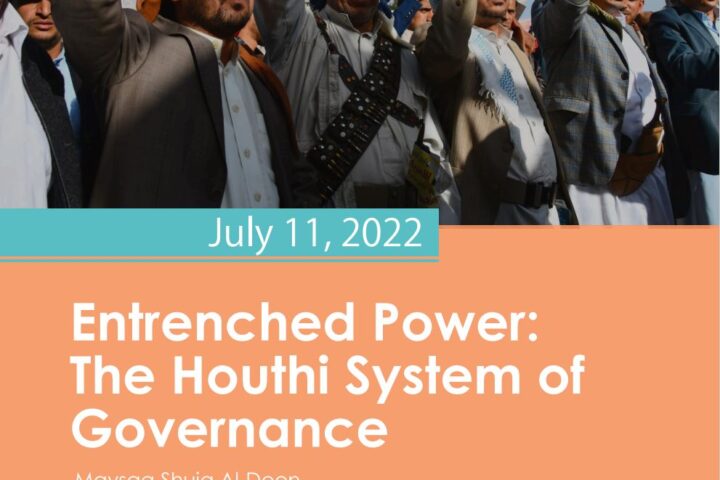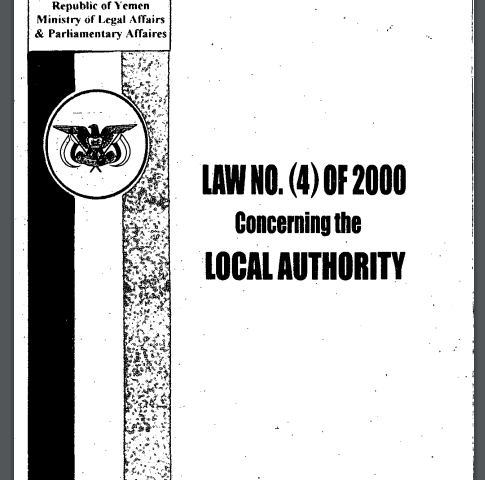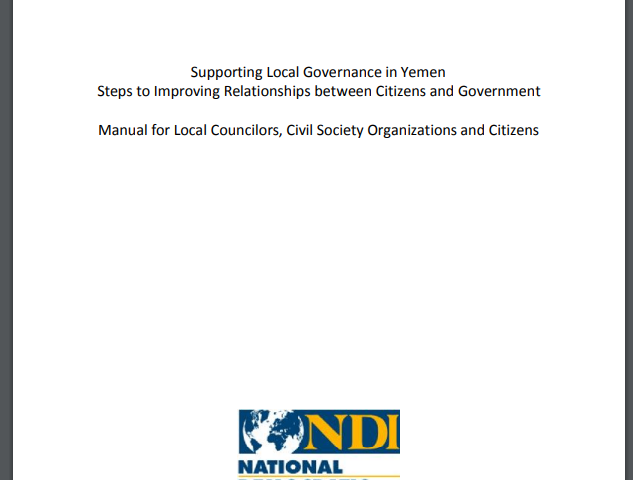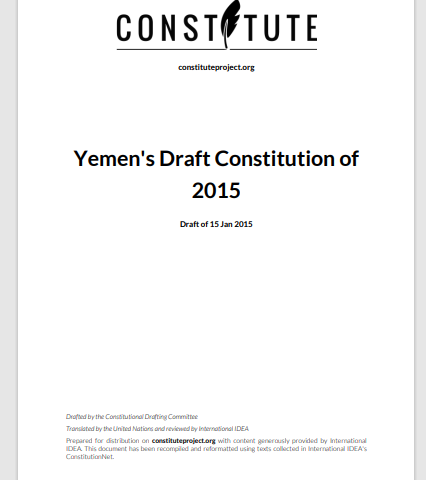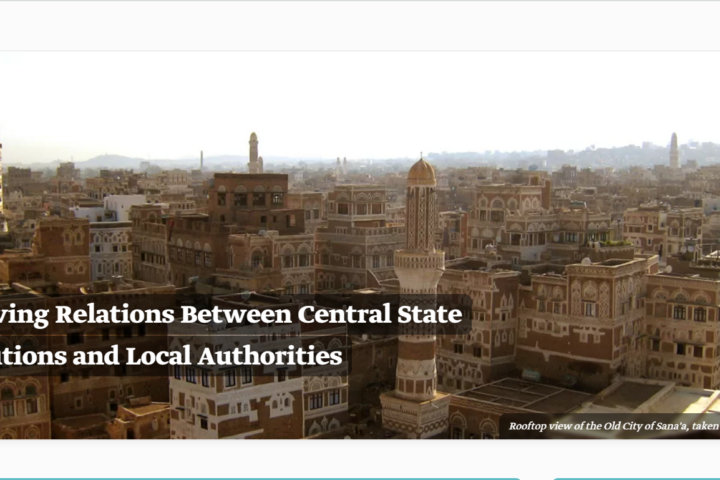The governorate of Amran is one of the governorates established after Yemeni unification. It is located 50 kilometers to the north of Sana’a city between Sana’a governorate and Sa’adah along the central highlands. It is divided into 20 administrative districts. The city of Amran is the governorate capital.
Amran governorate information
Map of Amran
Economy
Agriculture is the most important activity for the population of the governorate. The most important crops are cereals and vegetables. Livestock breeding is also an important economic activity. Agricultural production has been declining since the outbreak of the war as high fuel prices and falling household purchasing power have increased costs and reduced income for farmers. The governorate is home to the Amran Cement Factory, which uses locally mined scoria and perlite.1https://www.yemenna.com/index.php?go=guide&op=show&link=amran.
In 2014, Amran governorate derived 94% of its total general revenue from grants and central subsidies, while local revenues accounted for 6%.2Please see the appendix for further information on these different types of revenue. The most significant local sources of revenue are local shared revenues, zakat, revenues from goods and services, and fines. The war has damaged the governorate’s economy and the establishment of the General Zakat Authority and the transfer of zakat to central revenue has caused the governorate to lose an important source of income.3Republic of Yemen, Ministry of Finance, Budget Sector: estimated local authority budget for the 2014 fiscal year.
In 2014, the poverty rate in Amran was already very high at 76%.4Households Budget Survey 2014. This rate has likely increased significantly during the past few years and may exceed 80-90%. The Interim Food Security Classification for 2019 ranks Amran as the governorate with the third-highest levels of poverty, after Al-Hodeidah and Hajjah. Unemployment is very high.
Local governance
The local council of the governorate consists of 20 councilors in addition to the governor. There are two seats that were not filled in 2006, as elections could not be held in the appropriate districts. One councilor is deceased and four councilors are abroad. This brings the current membership of the council to 13 councilors. The work of the council has been suspended since the beginning of the war. The local council has not been able to convene regular meetings due to the destruction of the government complex, which housed the local council. The administrative board of the local council is carrying out its role, although it meets irregularly. Most Islah members of the governorate and district councils (85 members) have fled the governorate. There are no female council members at the district or governorate level.
The work of the local authority is performed mainly by the governor, the vice-governor (the Secretary General of the Local Council), and the head of the services committee. However, as in other areas under control of the de-facto authorities, the governorate supervisor is becoming increasingly decisive in local governance decisions. In Amran, supervisor and governor remain distinct roles, unlike in some other governorates under control of Ansar Allah.
Executive offices in the governorate are present and functional, performing the day-to-day work of local administration. The offices conduct their business from leased office spaces, since their permanent offices in the government complex were destroyed.5Interview with senior executive bureau official in Amran. March 2019.
Access to basic services
There are approximately 750,000 people (61% of the population) in need of assistance in Amran, 65% of whom are in dire need.6https://data.humdata.org/dataset/yemen-humanitarian-needs-overview, 2023 People in Need in Yemen The current IDP population of Amran is 275,000 (status December 2022).7Ibid.
Public hospitals and health centers provide limited health services to the population with support from international donors. Support from the local authority is very limited. Available health services are insufficient to meet the needs of the population, especially following the influx of many IDPs to the governorate.8Interview with senior executive bureau official in Amran. March 2019.
With regard to education, the war damaged 32 schools in Amran and teachers’ salaries are not being paid.9Economic and Social Development In Yemen Newsletter, Issue No. 30, December 2017, published by the Economic Studies and Forecast Sector in the Ministry of Planning and International Cooperation. Education increasingly relies on fee funding. UNICEF and the Social Fund for Development have contributed to the rehabilitation of damaged schools. UNICEF also furnished a number of large tents for use as classrooms.10Interview with senior executive bureau official in Amran. March 2019.
In 2016/2017, only 40% of Amran’s population had access to potable water. The water supply network in Amran city was cut off at the beginning of the war. Water services have since resumed with support from donors.11UNICEF, A report on the humanitarian situation in Yemen, October 2018, p. 7. Work is ongoing to expand the network to cover hitherto unserved areas of the city with support from international organizations.12Interview with senior executive bureau official in Amran. March 2019.
Demographics
| District | Size (km2) | Population (Female) | Population (Male) | Population (Total) |
|---|---|---|---|---|
| Harf Sufyan | 2734 | 28,248 | 30,003 | 58,252 |
| Houth | 370 | 17,616 | 18,739 | 36,355 |
| Al Ashah | 652 | 26,409 | 29,475 | 55,885 |
| Al Qaflah | 495 | 21,868 | 23,075 | 44,943 |
| Shaharah | 176 | 35,266 | 33,615 | 68,881 |
| Al Madan | 108 | 20,084 | 20,055 | 40,139 |
| Suwayr | 151 | 17,135 | 18,543 | 35,678 |
| Habur Zulaymah | 200 | 29,795 | 29,728 | 59,523 |
| Dhi Bin | 344 | 20,890 | 21,368 | 42,258 |
| Kharif | 265 | 32,057 | 31,714 | 63,771 |
| Raydah | 218 | 33,320 | 33,876 | 67,196 |
| Jabal Iyal Yazid | 242 | 62,174 | 60,688 | 122,862 |
| As Sudah | 174 | 23,430 | 22,457 | 45,886 |
| As Sawd | 157 | 20,685 | 20,179 | 40,864 |
| Amran | 119 | 63,345 | 67,233 | 130,578 |
| Maswar | 131 | 28,810 | 28,232 | 57,041 |
| Thula | 173 | 28,396 | 27,916 | 56,311 |
| Iyal Surayh | 240 | 35,990 | 36,057 | 72,047 |
| Khamir | 722 | 48,205 | 47,770 | 95,974 |
| Bani Suraim | 242 | 13,625 | 13,839 | 27,464 |
| TOTAL | 7,911 | 607,347 | 614,561 | 1,221,908 |
Figures are based on the 2021 Humanitarian Needs Overview Yemen, OCHA. Population figures include the number of IDPs and residents.


